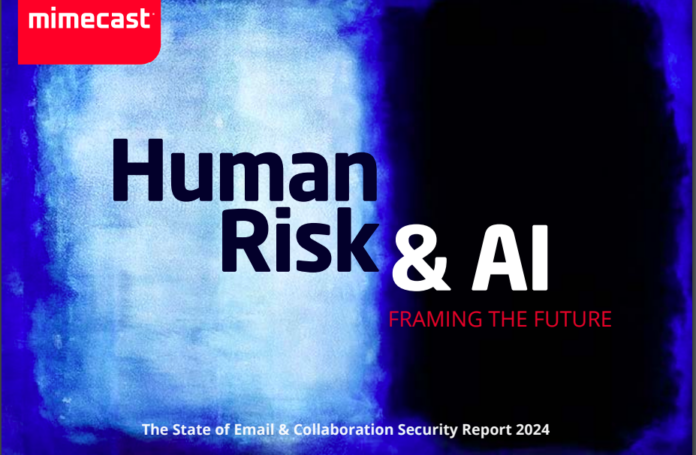Cyber threats are growing at an unprecedented pace, and the year ahead is fraught with cybercrime and incidents anticipated ahead of the busy election year where over 50 countries head to the polls, according to a report from Mimecast.
The cybersecurity firm said that with new threats like AI (artificial intelligence) and deepfake technology, the stakes are higher than ever to execute a strong cyber defense.
Mimecast has expanded the eighth or 2024 edition of its annual State of Email and Collaboration Security report to include insight on collaboration security in addition to email.
Mimecast commissioned UK-based Vanson Bourne to conduct a survey of 1,100 information technology and cybersecurity professionals, which took place during October and November 2023.
Survey participants were drawn from six countries, including the United States (27% of the total), the United Kingdom (18%), France (18%), Germany (9%), South Africa (9%) and Australia (18%).
Findings show that human risk is today’s biggest security gap, and IT teams must better equip employees with the right tools and training.
According to respondents, 74% of all cyber breaches are caused by human factors, including errors, stolen credentials, misuse of access privileges, or social engineering.
Also, IT teams are proactively stepping up their defense strategies, especially as AI presents new challenges. The emergence of AI is accelerating the spread of phishing and ransomware by making it easier for threat actors to perpetrate successful attacks.
Four in every five respondents are concerned about new threats posed by AI and 67% say AI-driven attacks will soon become the norm. As companies prepare for new threats, they’re viewing cyber risks as a bigger business problem, not just an IT problem.
Further, email remains the primary attack vector for cyber threats like phishing, spoofing, and ransomware, but collaboration tools pose new and dangerous points of entry for bad actors.
Among respondents, 70% expect collaboration tools to pose new threats, and 69% believe it is likely that their company will be harmed by a collaboration tool-based attack.
“Emerging tools and technologies like AI and deepfakes, along with the proliferation of collaboration platforms are changing the way threat actors work; but people remain the biggest barrier to protecting companies from cyber threats,” said Marc van Zadelhoff, Mimecast CEO.
“Cybersecurity and IT teams need to work with wider business leaders to prioritise understanding human risk,” said van Zadelhoff. “With the right tools and education, companies can better safeguard against threats and manage human risk.”
















